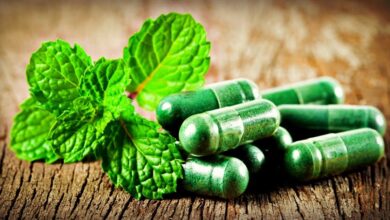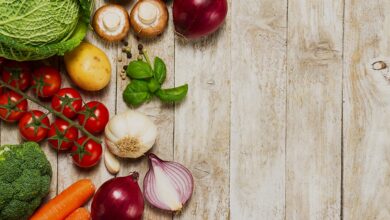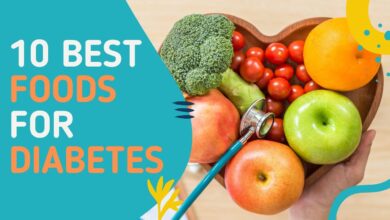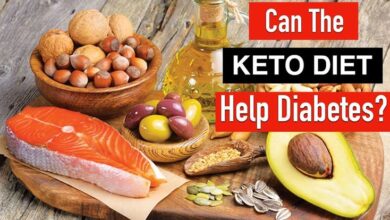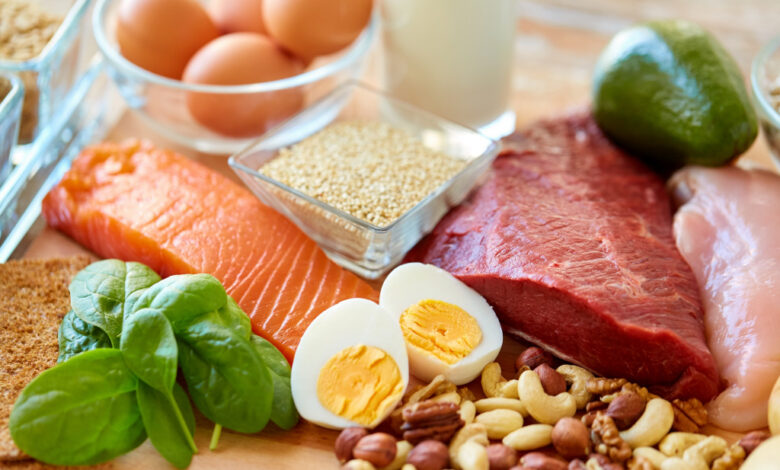
Living healthy isn’t about following complicated diets or cutting out every food you love—it’s about making smarter choices that serve your body’s needs. One of the most powerful ways to do this is by focusing on high-protein keto foods. These foods not only keep you full and energized but also torch fat and build lean muscle at the same time. When people think of the ketogenic diet, they often picture endless cheese, bacon, and butter. But here’s the truth: without protein, keto falls flat. Protein is the glue that holds muscle growth, fat burning, and overall metabolic health together.
Imagine your body as a car. Fats on keto act like premium fuel—they give you energy to run smoothly. But protein? That’s the engine that keeps the car from breaking down. Without it, the structure collapses. In Africa and Europe, where carb-rich staples like bread, pasta, rice, and yam dominate many diets, high-protein keto foods bring balance. They allow you to cut carbs without feeling starved, keep cravings under control, and actually enjoy the process of transforming your body.
In this guide, we’ll explore why protein matters, which foods fit perfectly into keto, and how Africans and Europeans can embrace these options within their local food culture. By the time you finish reading, you’ll know exactly which foods to eat to burn fat, build muscle, and live a healthier lifestyle—without feeling deprived.
Read Also Keto Food Shopping Guide: Best Grocery List for Beginners to Start a Low-Carb Lifestyle
Why High-Protein Keto Foods Matter for Fat Loss and Muscle Growth
Let’s start with the basics: why should you care about protein in the first place? Keto is known as a high-fat, low-carb diet, but many people overlook protein. The truth is, your body needs protein to preserve muscle, repair tissues, and fuel your metabolism. When you cut carbs drastically, your body burns fat for energy. Sounds great, right? But if protein is too low, your body may also start breaking down muscle. That’s the last thing you want.
Protein solves this problem. It prevents muscle loss while you’re in a calorie deficit. It also keeps you full for longer, which is a huge win when you’re trying to resist carb-heavy snacks. On top of that, protein has a high thermogenic effect, meaning your body burns more calories digesting it compared to carbs or fats. In simple terms, just by eating protein, you’re burning more calories without lifting a finger.
For example, in Nigeria, someone switching from yam porridge to goat meat pepper soup would find themselves fuller for longer with far fewer carbs. Similarly, in the UK, swapping a pasta lunch for grilled salmon and broccoli not only slashes carbs but also boosts protein intake dramatically. In both scenarios, protein helps your body stay in ketosis while maximizing fat burning.
Think of protein as the bodyguard of your muscles. While fat is the fuel that gets you through the day, protein makes sure your muscles stay strong and active. Without it, all the fat loss in the world won’t matter—you’ll end up lean but weak. With protein, you’ll be lean, toned, and powerful.
Best High-Protein Keto Foods That Burn Fat
When you’re looking for keto-friendly foods, not all proteins are created equal. Some options are nutrient-dense, others are high in healthy fats, and some bring both worlds together. Let’s break down the best of the best.
1. Eggs – The Perfect Keto Superfood
Eggs are perhaps the most accessible and affordable keto food in both Africa and Europe. They’re rich in protein, healthy fats, and essential vitamins like B12 and choline. Eggs are versatile too—you can boil them, scramble them, fry them in olive oil, or turn them into an omelet filled with spinach, cheese, or mushrooms. Each egg contains about 6 grams of protein and almost zero carbs.
Here’s why they’re fat-burning champions: eggs stabilize blood sugar levels, which keeps cravings at bay. They also contain leucine, an amino acid that directly supports muscle growth and recovery. Plus, eating eggs in the morning sets the tone for the rest of the day—you’ll feel satisfied, energized, and less likely to overeat later.
In Lagos, boiled eggs are often eaten as snacks, while in Paris, a cheese omelet is a popular breakfast. Both approaches keep you in ketosis while fueling your muscles.
2. Fatty Fish – Salmon, Mackerel, Sardines
Fatty fish are another superstar in the high-protein keto world. They’re rich in omega-3 fatty acids, which reduce inflammation, support heart health, and speed up fat metabolism. Salmon, mackerel, and sardines are widely available in European markets, while tilapia, catfish, and mackerel dominate African diets.
A single serving of salmon delivers around 22 grams of protein and a hefty dose of healthy fats. That’s why many athletes in Europe rely on salmon for post-workout meals. Meanwhile, in Ghana or Nigeria, grilled mackerel is a beloved dish that provides the same benefits at a fraction of the cost.
Eating fatty fish not only helps burn fat but also improves brain health, which is a bonus when you’re juggling work, fitness, and life stress.
3. Grass-Fed Beef and Goat Meat
Beef is a staple in many diets, but not all beef is equal. Grass-fed beef contains higher levels of omega-3s and antioxidants compared to grain-fed varieties. It’s a protein powerhouse that helps build muscle while keeping carbs at bay.
In Africa, goat meat plays a similar role. It’s leaner than beef, packed with protein, and widely used in stews and pepper soup. Goat meat also contains high levels of iron, which is crucial for energy and stamina.
Imagine replacing a bowl of rice with goat meat soup or swapping bread for a steak salad—you’ll not only cut carbs drastically but also give your muscles the nutrients they need to grow.
4. Poultry – Chicken and Turkey
Chicken and turkey are reliable sources of lean protein. A chicken thigh, when roasted or grilled, delivers protein without unnecessary carbs. Turkey breast, especially, is low in fat but high in protein, making it perfect for those who want to stay lean.
In South Africa, grilled chicken with spices is a common keto-friendly meal. In Europe, turkey often shines during festive seasons but can easily become part of a weekly keto diet. Poultry is flexible—you can make soups, salads, or stir-fries and stay comfortably within your carb limit.
5. Cheese and Greek Yogurt (Low-Carb)
Dairy products are tricky on keto, but when chosen wisely, they become powerful tools. Cheese, particularly varieties like cheddar, brie, or feta, packs protein and fat without too many carbs. Greek yogurt, if unsweetened, is another gem. It contains probiotics for gut health alongside protein for muscle repair.
For Africans, cheese may not be a daily staple, but yogurt is often incorporated into drinks and snacks. Europeans, however, have endless access to dairy, making it easy to add to keto meals. Just remember: moderation is key, as some dairy can add hidden carbs.
African-Friendly High-Protein Keto Foods
Africa offers plenty of traditional foods that naturally align with keto principles. Here are some standout options:
- Goat Meat & Cow Offals: Widely available, affordable, and nutrient-dense. Perfect for soups and stews.
- Tilapia & Catfish: Popular in markets across West and East Africa. Grilled fish is a keto-friendly favorite.
- Eggs: Accessible and versatile across the continent.
- Snails: Though considered a delicacy, snails are high in protein and surprisingly low in fat.
These foods are not just keto-approved; they’re culturally familiar and easy to find in local markets. By focusing on them, Africans can enjoy keto without relying on imported options.
European-Friendly High-Protein Keto Foods
Europe’s supermarkets are brimming with keto-friendly protein sources. Some examples include:
- Salmon & Cod: Staples in Nordic diets, packed with protein and omega-3s.
- Cheese & Yogurt: From French brie to Greek feta, dairy is a rich protein source.
- Grass-Fed Beef & Pork: Widely available, often raised under strict quality standards.
- Shellfish: Shrimp, mussels, crab, and lobster provide lean protein and variety.
European diets offer more diversity, making it easier to switch up meals without boredom while staying in ketosis.
How High-Protein Keto Foods Burn Fat
Here’s how protein directly impacts fat loss:
- Boosts metabolism: Protein digestion burns more calories compared to fats and carbs.
- Reduces hunger: It regulates appetite hormones, making you less likely to overeat.
- Preserves muscle: Keeps your metabolism high even while losing fat.
Think of protein as your fat-loss insurance. You’ll still lose weight without it, but with it, you’ll lose the right kind of weight—fat, not muscle.
How High-Protein Keto Foods Build Muscle
Protein is made up of amino acids, which act like building blocks for muscles. When you lift weights or engage in physical activity, your muscle fibers experience tiny tears. Protein repairs these tears, making your muscles stronger and more defined.
On a keto diet, carbs are limited, so your body relies heavily on protein for recovery. Foods like eggs, beef, and salmon provide exactly what your muscles need to grow while staying lean.
For example, a bodybuilder in Berlin might rely on steak and salmon post-workout, while a gym-goer in Lagos might refuel with goat meat and eggs. Both achieve the same result: muscle growth with fat loss.
Sample High-Protein Keto Meal Plan
| Meal | Option 1 (Africa) | Option 2 (Europe) |
|---|---|---|
| Breakfast | 3 boiled eggs + avocado | Greek yogurt + walnuts |
| Lunch | Grilled tilapia + spinach | Salmon + steamed broccoli |
| Dinner | Goat meat pepper soup | Grass-fed beef + mushrooms |
| Snack | Snails or boiled eggs | Cheese sticks or shrimp |
This simple table shows how both continents can apply the same keto principles using locally available foods.
Practical Tips to Incorporate More High-Protein Keto Foods
- Always keep boiled eggs handy—they’re the ultimate quick snack.
- Cook meat in bulk over the weekend for stress-free weekday meals.
- Replace carb-heavy snacks with cheese cubes or nuts.
- Use spices like ginger, garlic, turmeric, and pepper to enhance flavor and fat-burning.
These small shifts ensure you stay consistent and enjoy the process.
Potential Mistakes to Avoid
- Eating too much protein: This can spike insulin and kick you out of ketosis.
- Relying on processed meats: Sausages and bacon are okay occasionally but shouldn’t be staples.
- Ignoring hydration: Protein metabolism requires more water—stay hydrated.
- Forgetting fat balance: Too much protein and too little fat can stall progress.
Avoid these pitfalls, and your keto journey will be smoother.
Conclusion
High-protein keto foods are the missing link for anyone serious about fat loss and muscle growth. They keep you full, torch calories, and preserve muscle. Whether you’re in Africa or Europe, you have plenty of options—from goat meat and snails to salmon and cheese. The trick is to make them a regular part of your meals while keeping carbs low. If you want to build a lean, muscular body while burning fat naturally, the answer is simple: focus on high-protein keto foods.
Read Also Lazy Keto Meals for Beginners: Quick, No-Cook Low-Carb Recipes for Weight Loss
FAQs
1. Can I eat high-protein keto foods daily?
Yes, but balance them with healthy fats to stay in ketosis.
2. Are high-protein keto foods expensive?
Not always. Eggs, tilapia, and goat meat in Africa are affordable, while chicken and yogurt in Europe are budget-friendly.
3. Can vegetarians follow a high-protein keto diet?
Yes—options include tofu, tempeh, eggs, and Greek yogurt.
4. How do I know I’m still in ketosis with more protein?
Use ketone strips. If carbs are low and fats moderate, you’ll likely remain in ketosis.
5. What’s the best high-protein keto food for fat loss?
Eggs and fatty fish—they’re versatile, nutrient-rich, and keep you fuller for longer.

